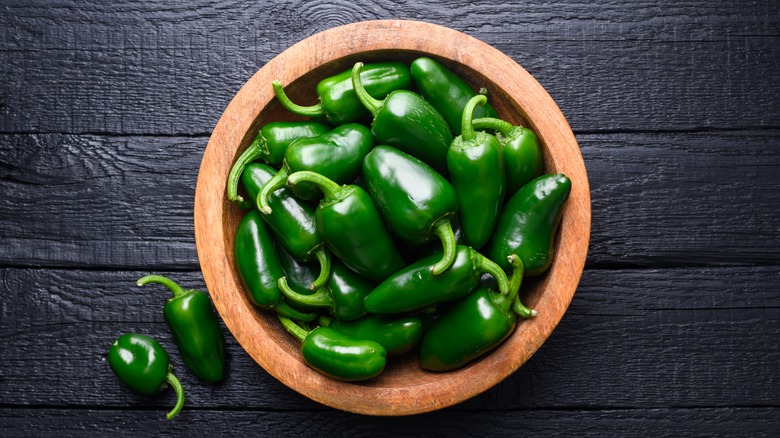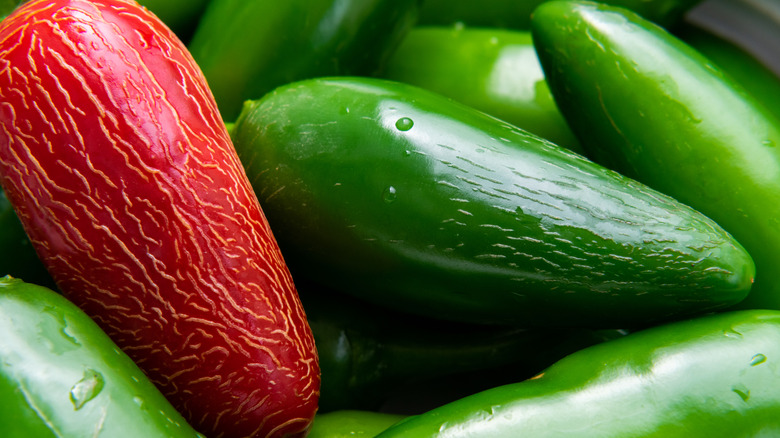The Quick Way To Tell How Hot Your Jalapeños Will Be
Whether you're a lover of spice or the extreme opposite, it truly is worth knowing how to identify the hottest and mildest jalapeños that you come into contact with. Without having an extensive amount of agricultural knowledge or even hands-on experience harvesting spicy peppers, there's nothing preventing you from knowing the difference between an unthinkably hot pepper and a manageable one. In fact, the trick comes down to the presentation of the pepper's skin.
When examining a jalapeño pepper in your local farmers market or grocery store, it's important to pay attention to the amount of lines or white specks on the pepper's surface, as they are key indicators for heat. The more lines that alter and wrinkle the pepper's skin, the more likely you're in for a spicy surprise. For instance, a jalapeño pepper that appears young without any lines or specks will be way milder compared to one that has countless lines or specks topping the skin. It's an easy trick to make sure you know what you're getting yourself into. Now, jalapeño lovers (as well spice-avoiders) can get one step ahead and save time when dealing with jalapeños, which are integral to many cuisines.
Other ways to identify a spicy jalapeño
You can also tell a spicy pepper by how mature it appears.The age and ripeness of a jalapeño (including its deepened red, orange, or yellow hue) will reveal the heat factor. Typically, jalapeños that end up in grocery stores are picked before properly maturing; this means they lack the real intensity that some cooks may be looking for. You can bet on a mature jalapeño to deliver the kind of undeniable spice that leaves you panting for ranch sauce or water.
As far as spice measurement goes, the true culprit and indicator of heat is capsaicin — the compound found surrounding the seeds in chile peppers that is responsible for the fiery bite. The greater the amount of capsaicin, the hotter the pepper will be. Famously hot peppers including jalapeño, habanero, scotch bonnet, and cayenne all have capsaicin to blame for their natural flame-like potential. Jalapeños contain a significant amount of capsaicin with the highest concentration existing within the white membranes around the seeds.
It's always a good idea to prepare yourself and your guests when it comes to chopping up and cooking with jalapeño peppers. Nobody enjoys the awkward revelation that the dish they thought was going to be gently spicy is, in fact, way outside of their tolerance zone.


